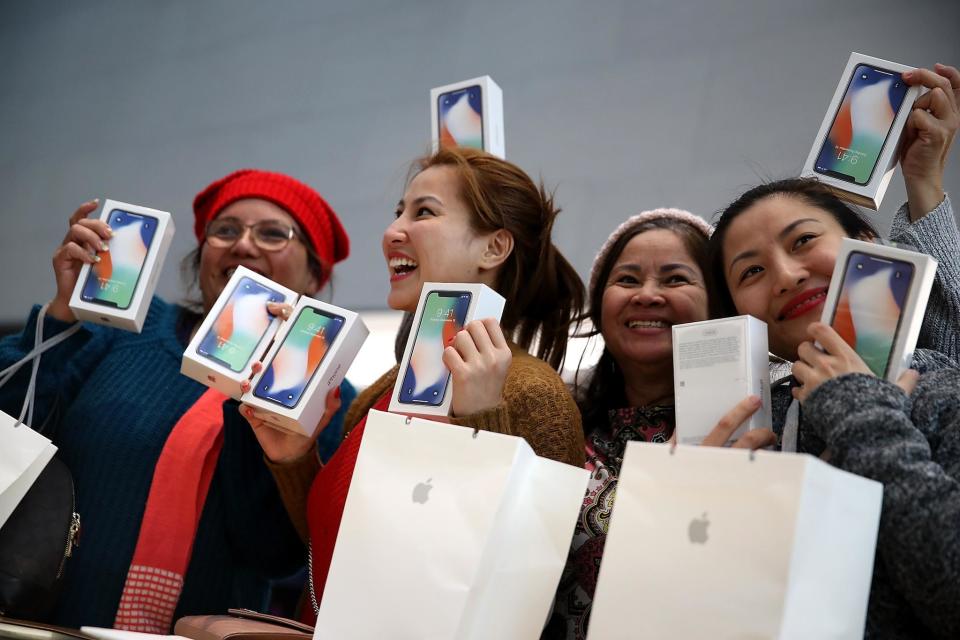With the $1,000 iPhone X flying high, what's Apple's next price-point innovation?

Apple’s logo was never more apt than at the launch of the thousand-dollar iPhoneX, last year – a metaphor for the bite it would take out of customers’ wallets.
Twitter, of course, filled up with self-righteous declarations of having none of it, while lampooning those preparing to shell out when the price point was revealed.
As is now very clear, Apple’s had the last laugh.
Forget technological innovation, it’s price innovation that is the company’s genius and its considerable marketing savvy. Testing that $1,000-barrier has proved to be highly successful.
The tech giant’s third-quarter results demonstrated that. They showed that people are only too willing to pay what it takes to be able to visibly peck away at a status symbol whenever they’re at Starbucks.
Revenues of $53.3bn (£40bn) were a fresh record, beating both Apple’s own, and Wall Street’s, projections during what tends to be a slower reporting period because consumers sit on their hands ahead of the updated iPhone’s traditional September launch.
The firm still shipped 41.3 million units. While that represented a rise of just one per cent on the previous year, the average selling price of $724 increased by 4.5 per cent.
So, who cares.
The X remains Apple’s most popular model despite, or perhaps because of, its outlandish price point and a profit margin that looks like witchcraft.
Logic would suggest that there is a point at which Apple’s pricing strategy starts to fall over; when the benefits of those margins are superseded by the negative impact on sales.
But we haven’t reached it yet.
As ever, the tech blogosphere has been buzzing with talk of the latest model. The suggestions are that it will be possible to house two sim cards in it, facilitating switching between, say, home and work use.
With the drumbeat steadily rising in volume ahead of the launch, at which fanboys will doubtless be asked to pay even more of a premium for this innovation, and will duly queue up outside stores to hand over their readies and give the media some nice pics, it’s hardly a wonder that chief executive Tim Cook smiled beatifically and talked of his confidence.
He had every reason to do so. He’s managed to get his customers cheering while he picks their pockets. Quite a trick, that.
It should be noted that outside the iPhone’s blistering performance, the company recorded growth of 31 per cent in “services” – iTunes, the AppStore, AppleCare, ApplePay, and AppleGiveUsAllYourSpareChange.
Those with an interest in the company’s long term success have good reason to feel pleased about that.
There may be a future where people talk about something other than the iPhone at Apple’s results, even if right now that hardly seems necessary.

 Yahoo Finance
Yahoo Finance 